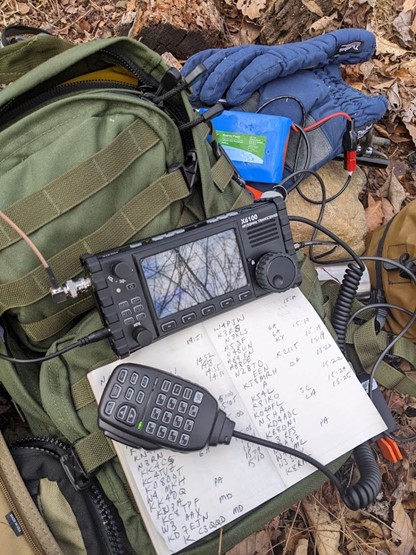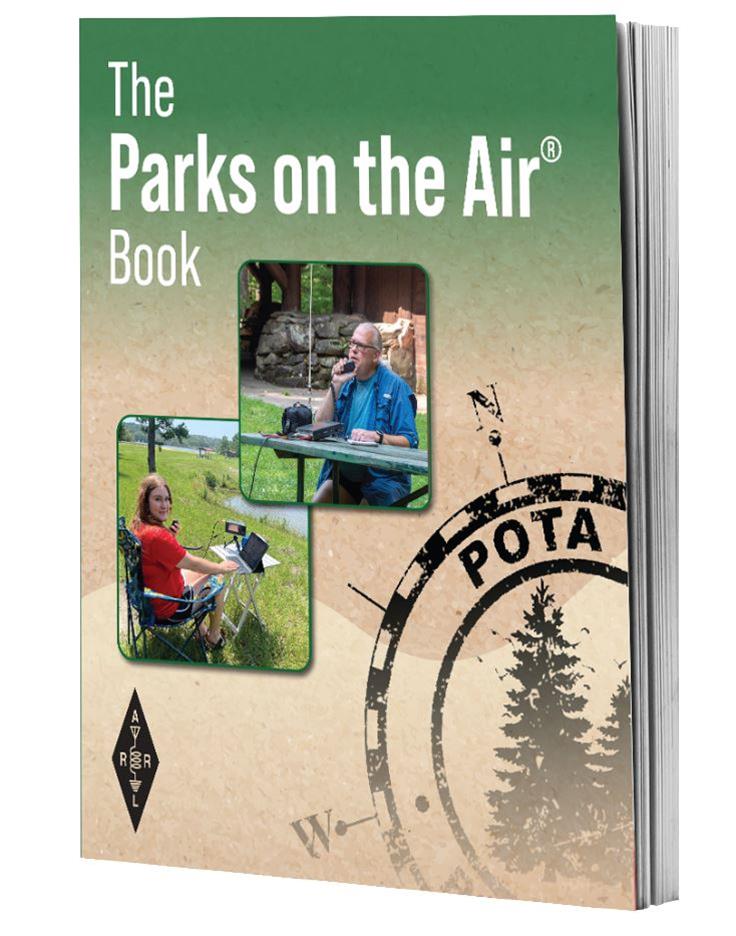Several months ago I saw a non-ham friend at the park. During our chat, he happened to look at the call sign license plate on my SUV.
“Ham radio? Are people still doing that?” he asked.
I assured him that ham radio isn’t dead, or even on life support. Today there are more licensed amateurs than ever, and many different activities are available to satisfy a wide variety of interests for people of all ages. One of the more popular activities is POTA.
What is POTA?
POTA (Parks on the Air®) is a great activity for ham radio enthusiasts. Operating radios in public parks is a fun way to combine outdoor adventures with making radio contacts across the globe. It’s a popular choice for many amateur radio operators who enjoy portable operations with minimal equipment and setup.
It’s an offshoot of activities like Summits on the Air (SOTA), where licensed hams operate temporarily from mountainous locations. SOTA was originally launched in Great Britain in 2002. OSPOTA (Ohio State Parks on the Air) was established in 2008 and is sponsored by the Portage County Amateur Radio Service of Ravenna, Ohio. POTA also has roots in the World Wide Flora and Fauna (WWFF) program, which began in 2012 to encourage amateur radio operators to operate portable from protected nature areas.
In 2016, the ARRL ran a one-year event called National Parks on the Air (NPOTA), which gained significant popularity. The success of NPOTA led to the formation of POTA as a separate entity from WWFF. POTA has since grown into a wildly successful program, continuing to promote portable operations from parks and protected areas worldwide. A nonprofit organization was founded in 2018 to continue POTA permanently.
POTA is Easy & Fun

POTA’s planners did it right—they made radio operation approachable to anyone. You don’t have to carry on a conversation or spend too much time stressing over everything. POTA does not require a formal exchange, just call sign, signal reports, and park location. Name and other exchanges are optional. Call, then respond, and you’ve got a QSO for your log. Simple indeed!
The POTA station operator, known as an activator, puts out a CQ POTA call and waits for other stations, called hunters, to respond. You won’t wait long if you “advertise” your activation. Post your activation plan on the POTA activation page and it will automatically keep you on the POTA spot page with your up-to-date frequency when using CW or Digital modes. You can also use spotting sites like DX Summit or DX Watch to let other hams know you’re on the air.
Announcing your activation plan through social media such as Facebook, X, and other sites can help you produce even more QSOs. The post should include your call sign, approximate times, frequencies, some station details, etc. Allow the hunters enough lead time to find you.
Anyone can do POTA with almost any transceiver, from a low-power QRP rig to a 100-watt radio. A simple dipole, end-fed, or vertical antenna is sufficient to make local and even DX contacts. It’s a great way to not only get a taste of HF operation but also make a game of radio in a way that keeps it interesting. You can easily get hooked.
POTA is set up so only the activator station submits a log. Logs for hunters are optional. You can register on the POTA website to see the contacts that the activators have submitted for you.
POTA Fans
There are many advantages to POTA participation. Imagine the low noise floor when you escape the RFI typically found in cities and suburbs. Apartment dwellers and those with HOA restrictions can freely set up antennas outdoors—within reason, of course. And don’t forget the benefits of fresh air and sunshine.
Here’s a random collection of comments made by amateurs on various forums, including Reddit, QRZ, and others.
- “I just did a dual park and had a blast. It’s addicting and I don’t even know why.”
- “POTA is secret-sauce level, reinvigorating a new generation to HF radio IMO.”
- “POTA is helping keep ham radio alive IMHO. I’m a big SOTA fan as well.”
- “I tend to hunt from home, but the real fun is schlepping my stuff to parks.”
- “It’s like Field Day every weekend!”
- “I’m having more conversations about ham radio than ever now that I’m hanging out in parks with my radio gear. A few weeks ago, a guy wandered up as I was operating. He says, ‘Is that Parks on the Air?’ My jaw dropped.”
Saving Amateur Radio?
POTA didn’t do it alone, but it helped create more interest. Along with digital modes, code-free licenses, emergency communications, public service opportunities, and numerous other activities, POTA has helped breathe new life into the hobby. What could be better than setting up shop in a park, firing up a radio, and making some contacts in the great outdoors, enjoying the fresh air and change of scenery?
Your POTA activation is also an opportunity to showcase ham radio to the public. People are genuinely interested and ask questions. Of course, they want to know what we’re doing with all the radio equipment, and it gives you an opportunity to share the experience. New hams will also visit, wanting to see your activation and learn more about things they can do with amateur radio.
Sending CQ POTA seems to attract calls—not as much as a rare DX station, but enough to keep you busy and improve your operating skills. Interested? Check out ARRL’s The Parks on the Air Book and the official POTA website for the complete story.


